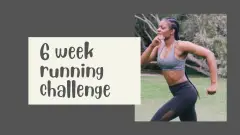Get a full body strength and cardio workout with this March fitness challenge. It has a different combination of 6 high intensity exercises each day to keep you challenged and stop you from getting bored.
About this challenge
Intensity level: intermediate
Benefits: this is a full body workout, with exercises for all muscle groups
Safety: please read the general safety information here. Please also be aware that static contractions like plank holds can cause an increase in blood pressure. This is not a problem for healthy individuals, but if you have high blood pressure it’s not advisable to do static holds.
Warm up: you should warm up your muscles and joints by doing the warm up exercises shown in the exercise instructions section below.
What you need
Footwear: the high kicks are a high impact exercise so you will need trainers to absorb some of the impact.
Hand weights: the side bends will be more effective if done with hand weights. See a hand weights buying guide here.
Exercise mat: for the floor exercises you’ll need a mat or something similar to provide some cushioning. See an exercise mat buying guide here.
March workout challenge chart
There are 10 exercises altogether and each day you do a different combination of 6 of these exercises. Reps/time for each exercise is:
- 30 seconds of the kicks and plank (for the plank 30 seconds on each side)
- 30 reps of all the other exercises (30 on each leg where applicable)
Complete 3 sets (do all 6 exercises for the time/reps shown, then start again and repeat twice more).
The chart shows which exercises to do each day and instructions for the exercises are below the chart.

Exercise instructions
Warm up
Do these exercises each day to warm up:
Arm circles – do 5

Knee lifts – do 16
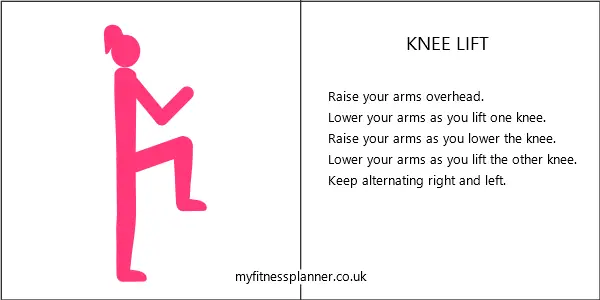
Challenge exercises

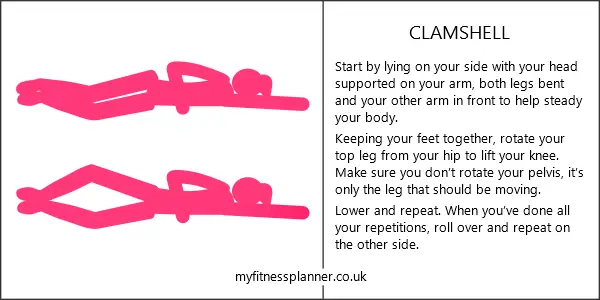
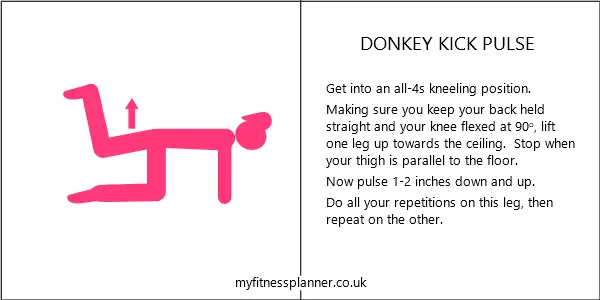
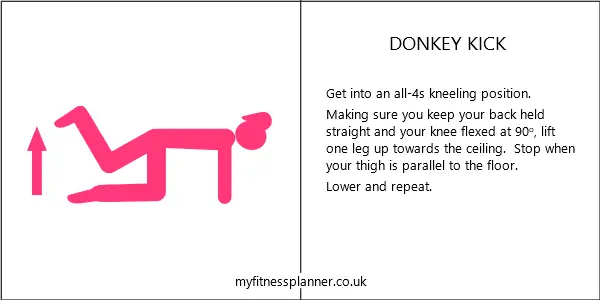
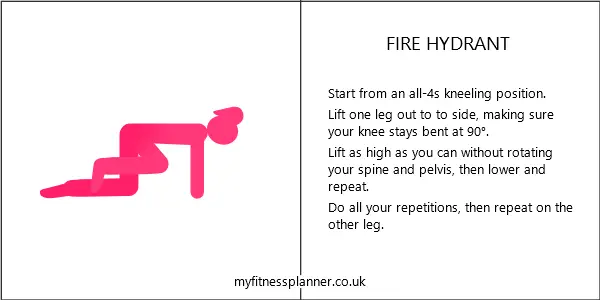
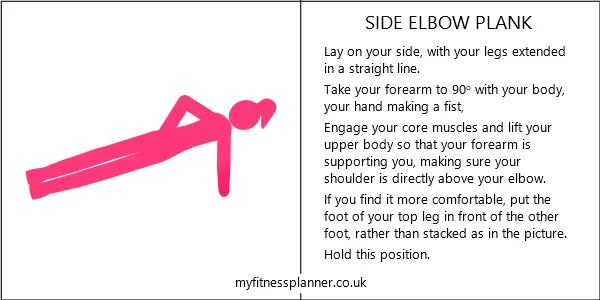
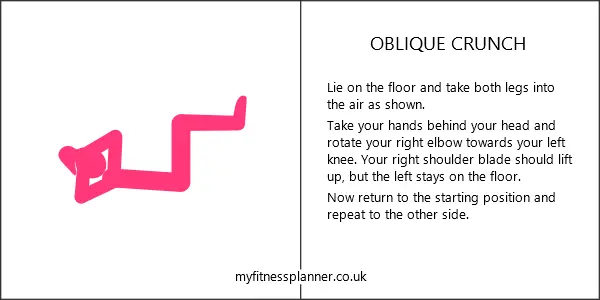
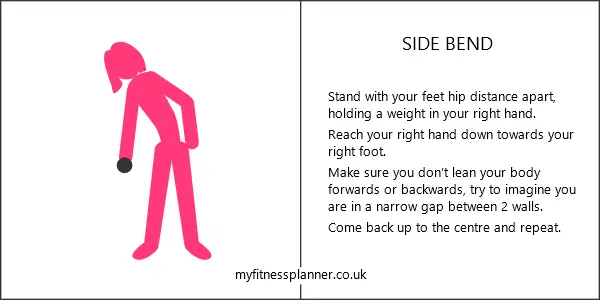
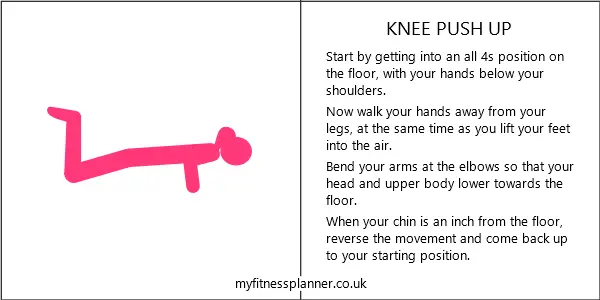

Muscles used in the clamshell
The clamshell exercise is a popular rehabilitation and strength-training movement primarily targeting the hip muscles. It is commonly used to improve hip stability, strengthen the glutes, and increase mobility in the hips. Though it may seem simple, the clamshell works several important muscles in the lower body, especially those around the hip and pelvis.
1. Gluteus Medius
The primary muscle worked during the clamshell exercise is the gluteus medius. This muscle is located on the outer surface of the hip, just beneath the gluteus maximus (the large muscle of the buttocks). The gluteus medius plays a key role in hip abduction—moving the leg away from the midline of the body—and hip stabilization. When performing the clamshell, the gluteus medius is activated to lift the top knee away from the bottom leg while keeping the feet together. Strengthening this muscle is vital for improving pelvic stability and preventing injuries, especially in activities like running or walking.
2. Gluteus Minimus
The gluteus minimus, which lies beneath the gluteus medius, also contributes to the clamshell movement. Similar to the gluteus medius, the gluteus minimus assists in hip abduction and plays a supporting role in stabilizing the pelvis during dynamic movements. Strengthening both the gluteus medius and minimus helps in maintaining proper alignment of the pelvis and reduces the risk of overcompensation from other muscles, especially the lower back and knees.
3. Tensor Fasciae Latae (TFL)
The tensor fasciae latae (TFL) is a small muscle located on the outside of the hip, just in front of the gluteus medius. It works alongside the gluteus medius to aid in hip abduction. During the clamshell exercise, the TFL contributes to the outward rotation of the hip and the movement of the knee away from the body. While not the primary muscle, the TFL’s activation helps improve overall hip control and stabilization.
4. Hip External Rotators
The hip external rotators, including muscles like the piriformis, obturator internus, and gemelli muscles, are also engaged during the clamshell. These muscles help to stabilize the hip joint during the movement and assist in maintaining the alignment of the hip as the knee lifts. Strengthening these muscles helps to improve the coordination of the entire hip complex and supports proper movement mechanics.
5. Core Muscles
Though the focus is on the hips, the core muscles (abdominals and lower back) are indirectly engaged to maintain proper posture and alignment throughout the clamshell. The core helps stabilize the torso to prevent unnecessary motion and keep the movement controlled.
